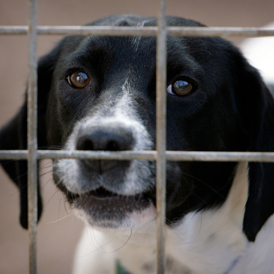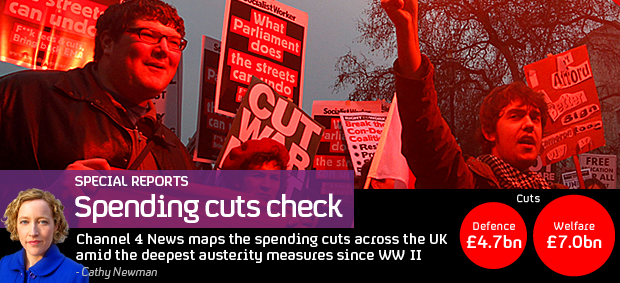Dog-eat-dog world of charity funding
Why do some charities rely on government funding when others manage without? Channel 4 News speaks to organisations threatened with closure and charities which survive on public donations.
Figures from the union-backed website False Economy reveal that more than 2,000 charities and voluntary organisations are facing funding cuts.
Almost 80 per cent of voluntary organisations receive no money from the government, which spends £12.8bn a year on the sector.
But anti-cuts campaigners argue there are some charities which could not survive without government help.
The Calthorpe Project in north London is a community garden which offers various programmes for vulnerable inner-city children and adults.
It has been running for 27 years but has just learnt it is losing council funding of £80,000 per year. It needs £300,000 annually to survive.
Co-ordinator Louise Gates told Channel 4 News the project faces a “very depressing” situation: “We’re looking at redundancies, children having nowhere to play, parents not having anywhere to meet.”
Louise said the competitive nature of fundraising meant it would be tough to fill the shortfall: “When you’re all competing and people have a choice of two groups, one which helps local people compared to another which helps children with illnesses, it’s going to be difficult.”

Fundraising ‘tougher than ever’
The RSPCA receives virtually no government funding, and has to raise £110m a year.
Head of fundraising Catherine Cottrell told Channel 4 News she had “huge sympathy” for organisations facing government cuts.
“The RSPCA is a very well known charity name and its work is very well publicised.”
But Catherine added it was still “tougher than ever” to raise money and that the charity had made redundancies and been forced to prioritise more vulnerable animals since the recession.
She said charities facing funding cuts should avoid looking for short-term fixes and try to diversify funding in the long term.
Director of fundraising at the Battersea Dogs and Cats Home, Liz Tait, agreed: “All charities, large or small, need to invest in fundraising and need to put fundraisers at the heart of the organisation.”
FactCheck figures on charity funding
• Almost 80 per cent of voluntary organisations receive no money from the Government. Three quarters of that money is spent on contracts and services, rather than grants of money.
• While major charities (those with incomes of more than £10m) receive 37 per cent of their income from the public purse, the government gives minor charities (with incomes of less than £10,000) just 5 per cent of their income.
• Medical groups attract the lion’s share of the UK's donations, taking 32 per cent, while children and young people's charities come a close second, supported by one in four donors.
• The Charities Aid Foundation (CAF) estimates that the British public donated £10.6bn to the voluntary sector last year. Typically, households gave £12 a month.
David Cameron has admitted that “not all local authorities will make good decisions”, adding that “some charities will get cut”.
But critics argue that many of the smaller, more vulnerable charities will be hit hardest, as they rely on local authority contracts.
Alison Blackwood, head of policy at the London Voluntary Service Council, told Channel 4 News that there are some organisations for which government funding is essential.
“Research has shown that when government, at whatever level, wants to fund charitable services, it is often cost effective services that deal with complex issues surrounding disadvantage in large urban areas.
“These vital services fill gaps in local provision and save government money in the long term as they address problems at an early stage, e.g. housing and homelessness services, legal advice, health related services, services for children and young people.”
